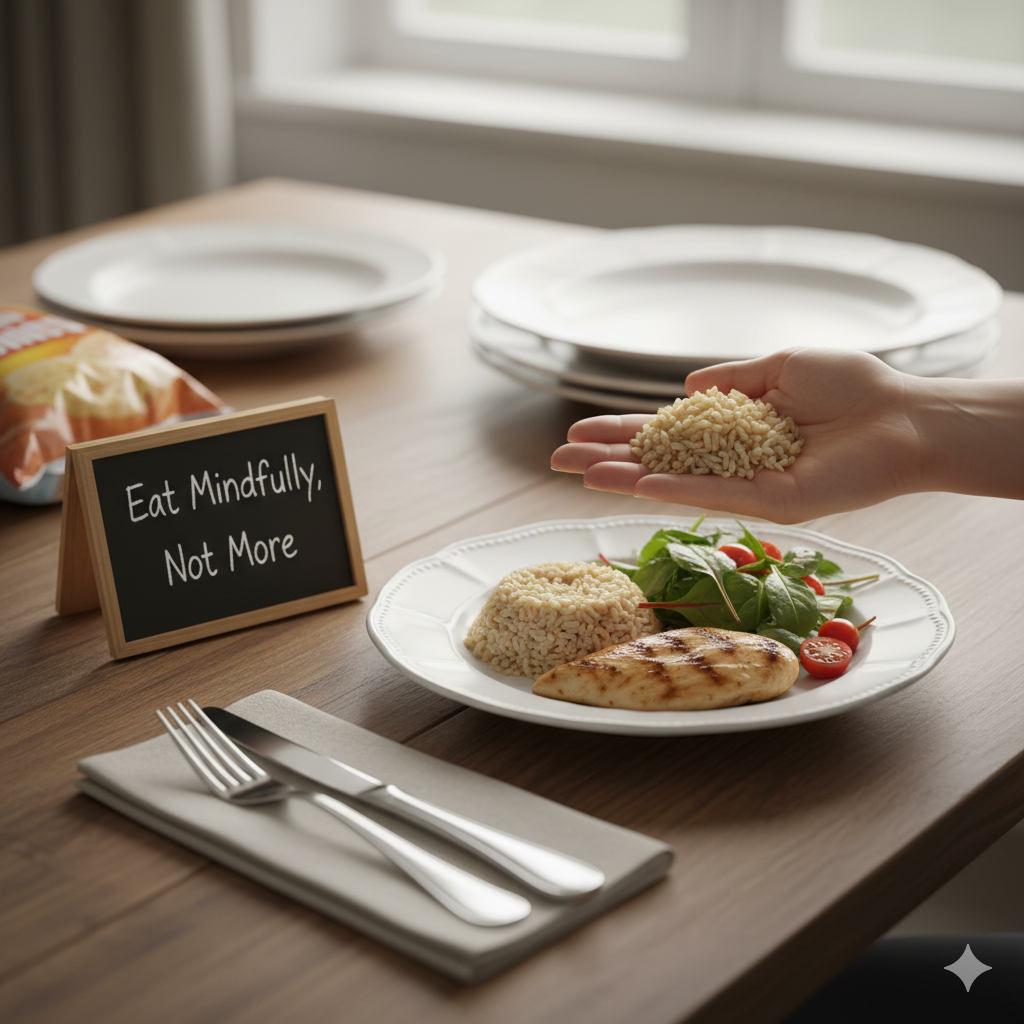
It is very simple to consume more than our bodies truly require in the current world since we are continuously exposed to large portions, such as those found on restaurant plates and in enormous snack packs. This “portion distortion” phenomena is one of the most significant, yet subtle, factors undermining our energy and health objectives. The goal of portion control is to retrain ourselves to respect and acknowledge our body’s actual hunger and fullness cues, not to calculate calories or feel deprived. This is the fundamental talent that determines not just how much fuel we consume, but also how well that fuel contributes to our long-term well-being.
Both biology and visual cues contribute to the difficulty of portion control. Our eyes are frequently larger than our stomachs, and research indicates that we typically consume whatever is placed in front of us, regardless of how hungry we actually are. The mind is tricked into believing that a typical portion appears little, which is why a huge dish promotes overindulgence. In addition, hurrying through a meal virtually ensures that we miss the critical point of satiety because it takes our brain around 20 minutes to process the “full” signal from our stomach. Relying on speed or outside cues (plate size) will unavoidably result in overeating and undue strain on our digestive systems.
We must put into practice useful, easy tips that facilitate mindful eating if we want to regain control. Reducing the size of your dinnerware is a wonderful place to start because it instantly gives the appearance of a modest portion being larger. Another great way is to use your hand for quick visual estimation: a portion of vegetables is represented by your fist, a serving of carbohydrates by your cupped hand, and a serving of protein by your palm. Above all, make a commitment to eating slowly. Between mouthful, put down your fork, use your senses, and enjoy the taste and feel of your food. Your body’s wisdom can catch up to your consumption during this pause.
Learning portion control is ultimately a self-respecting practice that has enormous benefits. It is the simplest method for maintaining steady energy levels throughout the day, improving digestion, and regularly controlling your weight. By regularly engaging in these simple, intentional mindfulness practices—using a smaller plate, paying attention to your body’s natural pace, and respecting your actual feelings of fullness—you may transcend dieting and create a lifelong, healthy relationship with food.
